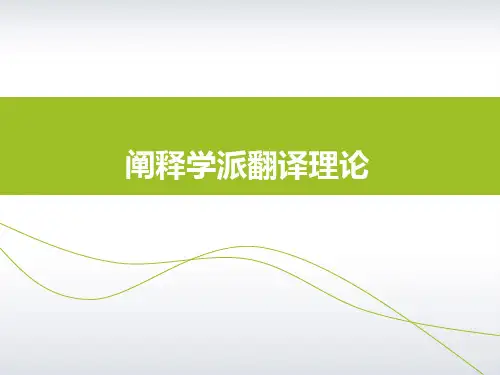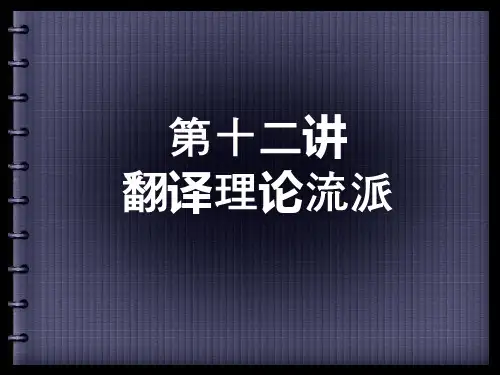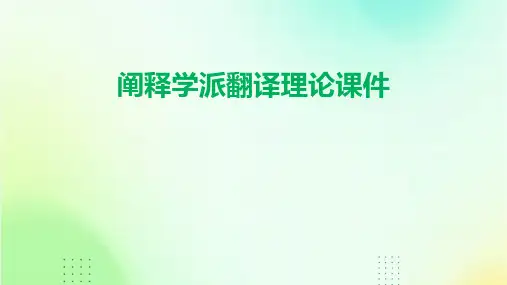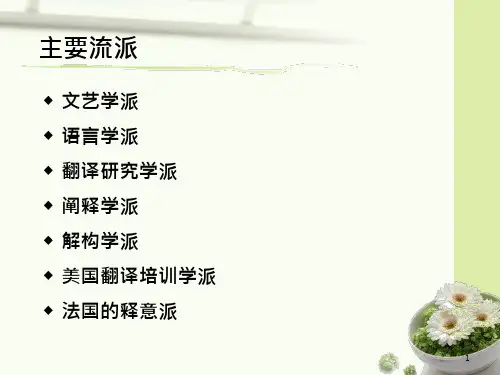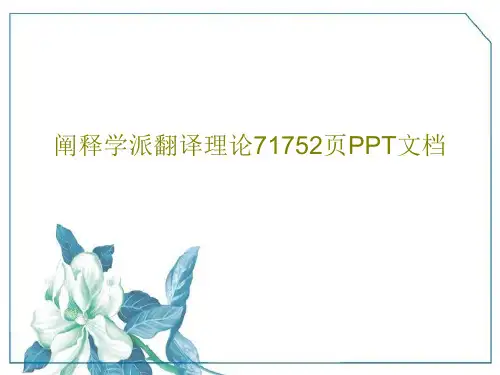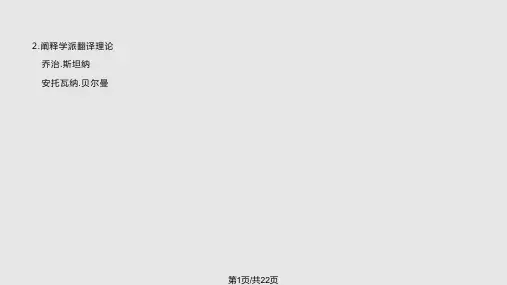阐释学派翻译理论
第一页,共26页。
主要内容
阐释学 背景 代表人物及其观点
阐释学翻译 ➢ 斯坦纳 《阐释的步骤》 ➢贝尔曼 《翻译及对异的考验》
第二页,共26页。
一、背景
1.阐释学(Hermeneutics)的定义及来源
(1)定义:阐释学也叫解释学,是一门对意义的理 解和解释的理论和哲学,起源于古希腊罗马时期和基 督教的中世纪,在19世纪形成独立的学科。
(3)文艺复兴和宗教改革时期:不再拘泥于宗教经典,而 是扩大到对古代文化经典的阐释。
第四页,共26页。
二、代表人物和他们的观点
1.施莱尔马赫阐释学翻译观
• 1813年,施莱尔马赫在柏林皇家科学院的讨论会上宣读了论 文《论翻译的方法》,从阐释学的角度论述了翻译与理解的 关系。
• 他指出翻译可采取的两种途径:异化VS归化 1)译者可以“不打扰原作者而将读者移近作者”——以作者为中心( 偏向源语)。
• However, “both the outflow of energy from the source and the inflow into the receptor ”(Steiner, 2001) indicate that it is really difficult for the translator to find the ideal point without any loss of energy. The problem of being insufficient, superfluous, or whatever in poor translation, usually come from the final step.
第十四页,共26页。
pensation

